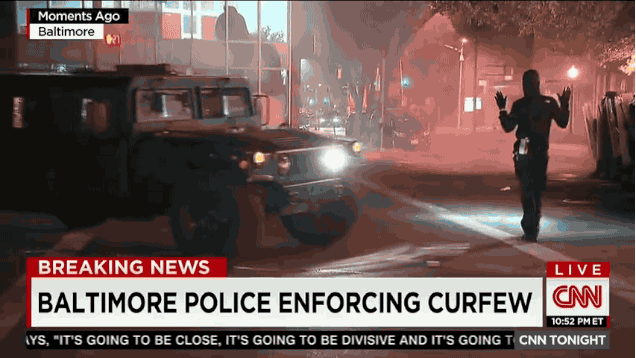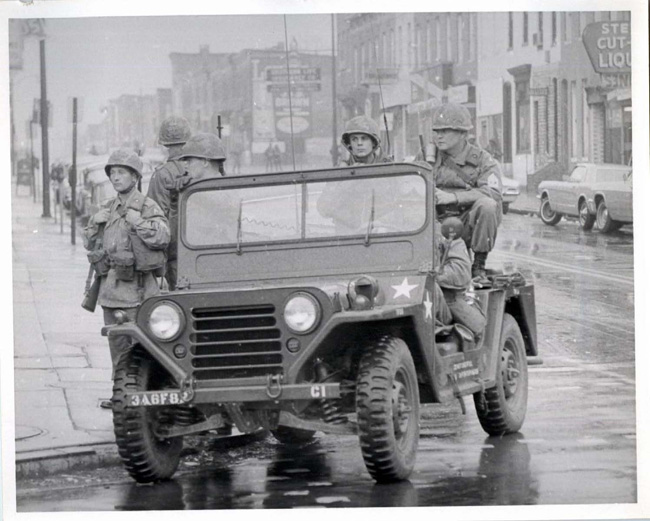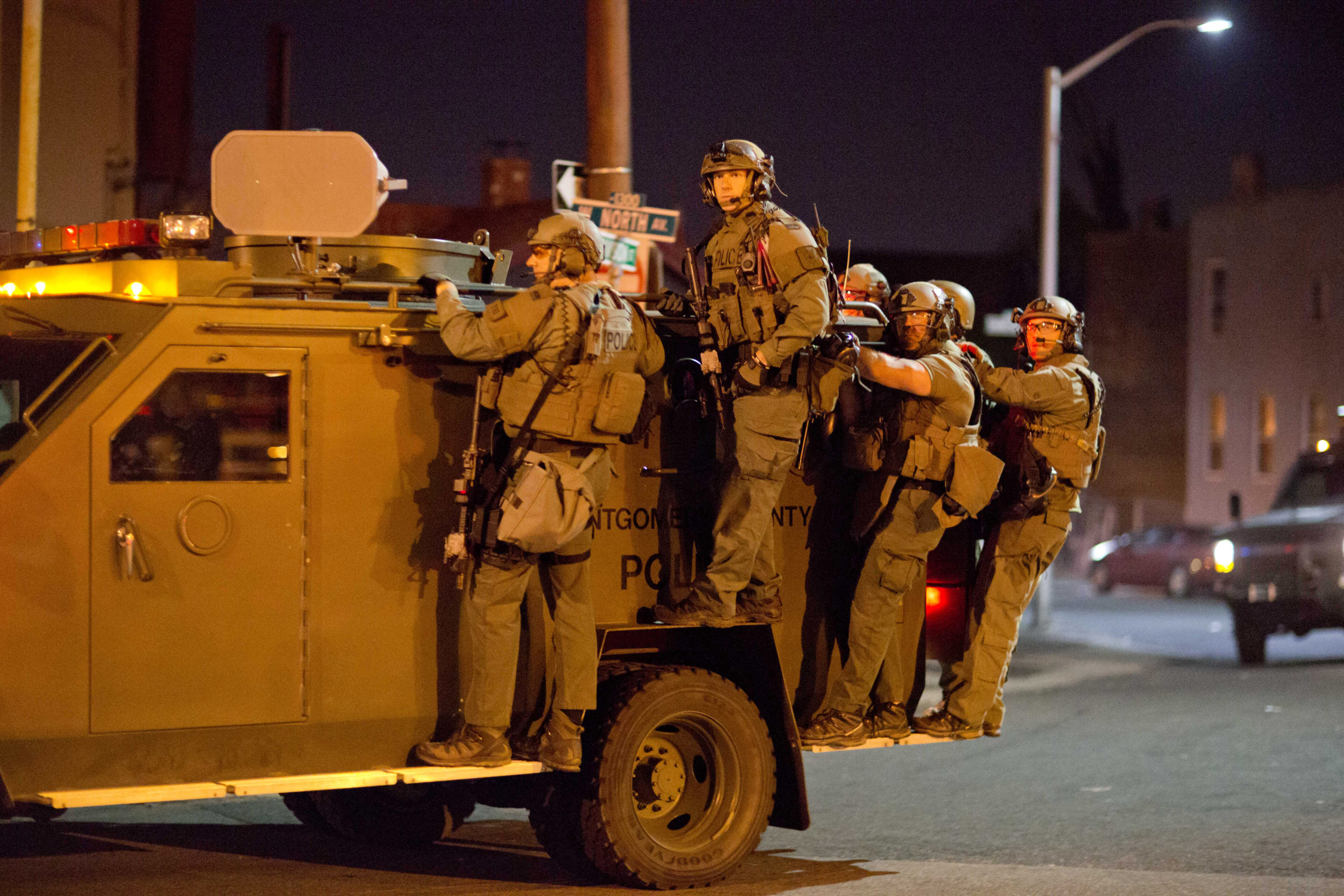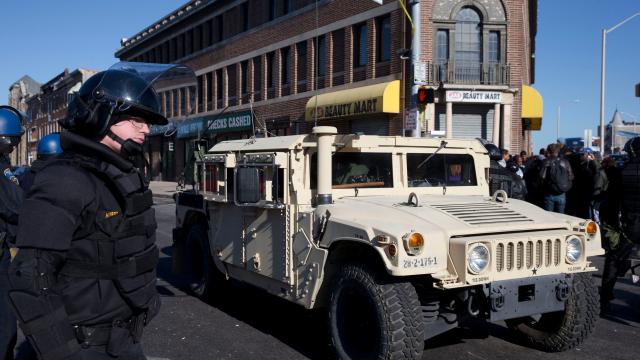In response to rioting and violent protests in Baltimore over the death of Freddie Grey, the US National Guard was deployed for riot control in Maryland for the first time since the 1960s race riots. Some 500 troops patrol the city, clad in body armour, with automatic rifles strapped across their chests.
In 1968, mobilising 5000 guardsmen was equivalent to a military escalation. Historically, the distinction between the police and the National Guard was that the Guard brought big guns, tanks and intimidation to a city. But today the Guard is virtually indistinguishable from the local police that clashed with protesters in Baltimore.
As The Washington Post noted last August, the cops are already using the tools of military troops.
Consider, for example, this swift arrest GIF posted by Gawker:

The police in Baltimore already have big guns, body armour and intimidating vehicles.
Here’s the Guard during Baltimore race riots 50 years ago:

The National Guard in Baltimore in 1968. Picture: LT. James V. Kelly / University of Baltimore Archives
Here’s Baltimore police this week:

It’s no secret that police departments across the country have been outfitted with military grade gear. The protests in Ferguson and elsewhere last year reminded us of that. The police have been gradually militarised — both in terms of tech and tactics — since President Richard Nixon launched the “war on drugs” in the early 1970s.
Arming cops like soldiers began in 1990 with the National Defense Authorization Act, which made it legal for the Department of Defense to transfer excess property — weapons — to local police for the purpose of fighting the war on drugs. Following the DoD’s enormous expenditures on the wars in Iraq and Afghanistan, it was left with a surplus of all kinds of military weaponry, which is why small suburban police departments towns have inherited MRAPs — vehicles designed to withstand bomb explosions.
The police in Ferguson looked like they were patrolling the streets of Fallujah, because they were using a lot of the same gear. A foreboding sentence from last summer’s WBAL investigation describes Ferguson police looking like “they’re loaded for war in an attempt to control protesters and looters.”
The same is true in Baltimore. In August, a WBAL investigation revealed that the Baltimore Police Department had spent $US589,000 on “military-style” weapons since 2008, including body armour, assault rifles and shotguns. Included in the haul were deadly M14 rifles from the Department of Defence. At the time, the M14s were reportedly going to be sent back to the military. No word on whether that final transaction ever happened.
The Guard follows strict protocols when it comes to domestic law enforcement situations like the one in Baltimore; the military-style Rules of Engagement are replaced by the rules for the “use of force.” Basically, the amount of force that can be applied runs on a six-step continuum that begins at just stand there and look tough and ends with you are in danger kill them. This is very similar to the standard use of force continuum that’s used by law enforcement agencies across the country.
As troops poured into Baltimore yesterday, National Guard spokesman Rick Breitenfeldt told The Washington Post, “Marylanders should be reassured that the National Guard is carrying out a well-established plan to ensure the safety and well-being of all law-abiding citizens.”
Under the watch of the National Guard and riot police, Baltimore passed a relatively peaceful night. Not everyone respected the Mayor’s 10PM curfew, and those who didn’t were swiftly arrested. Throughout the city, there were signs that the worst of the unrest had passed, even if the armed guards and burned-out buildings remained.
In that way, Governor Larry Hogan kept the promise he made yesterday when he explained his rationale for deploying the National Guard to the streets of Baltimore for the first time since Martin Luther King assassination riots consumed it in April 1968: “We’re not going to have a repeat of last night… It’s not going to happen tonight.”
Sooner or later the National Guard will depart, and the tensions that prompted the people of Baltimore to riot will remain. As the investigation into how Freddie Grey died in police custody progresses, there will surely be more unrest. When it happens again, the Governor would do just as well to let the National Guard stay home. The guns are already on the ground.
Picture: AP
